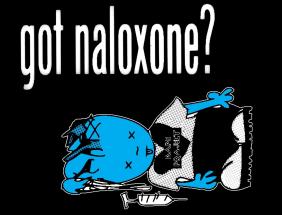The heroin epidemic, and the antidote for overdose

Drug War
Drug Policy Reform
Addiction Multimedia
Harm Reduction Videos
Harm Reduction
Naloxone
Overdose Prevention
Overview
Originally Published: 02/27/2014
Post Date: 02/27/2014
by CNN | Kristina Sgueglia. Haley Draznin and Alexandra Field
Summary/Abstract
CNN video and article ,The heroin epidemic, and the antidote for overdose, about naloxone as an effective method to reduce opioid related overdose mortalities.
Content
Lifesaving Drug for Heroin Overdoses |
|
|
STORY HIGHLIGHTS
- There's a proven antidote that can save lives during a heroin overdose: naloxone
- New York City has been hit hard by heroin use, and officers say naloxone has saved lives
- Food and Drug Administration has discussed making naloxone for over-the-counter use
- There's a greater push to get naloxone in the hands of first-line responders nationwide
(CNN) -- Naloxone. It's the name of a potentially lifesaving drug designed to reverse opioid prescription drug and heroin overdoses.
In one case last month, a pair of New York City police officers put it to the test and saw it work.
"We used the naloxone, we injected it into his nose, shortly ... after about 20 to 30 seconds, he ... started breathing and his eyes opened," NYPD officer Kevin Kouroupos told CNN.
Heroin-related deaths increased 84% from 2010 to 2012 in New York City and involved 52% of all overdose deaths in 2012, according to the city's Department of Health and Mental Hygiene.
The problem is particularly bad on Staten Island, where the death rate from overdoses is almost three times higher than the rest of New York City, according to the agency.
"I do think that every police officer should have it," Kouroupos said.
As part of a pilot program launched in December, a group of NYPD officers on Staten Island is armed with naloxone nasal spray and trained to use it at the sign of an overdose.
"The pilot was selected for Staten Island where the mortality rate from overdose is 7.4 per 100,000 compared to 2.4 per 100,000 citywide," New York City's Department of Health and Mental Hygiene said in a news release Thursday.
Long Island sees exploding heroin use
This marks a greater push across the nation to get naloxone in the hands of first-line responders, emergency medical technicians and other overdose witnesses. That effort has gotten a lot more attention since the death of actor Philip Seymour Hoffman, who overdosed on heroin on February 2.
As of 2010, naloxone was distributed in 15 states and the District of Columbia. Notable cities and states that use it include Baltimore and Chicago, and New Mexico, Massachusetts, Michigan, California and New York, according to the Centers for Disease Control and Prevention.
Naloxone distribution programs train potential overdose witnesses to correctly recognize an overdose and administer the drug, enabling bystanders to save more lives.
"You need to have somebody else there to actually give the medication," Dr. Sanjay Gupta, CNN chief medical correspondent, said on "Erin Burnett OutFront" on Tuesday. "The kit is a couple vial syringes, and it comes with instructions."
The Department of Health recommends administering naloxone directly to an individual overdosing after calling 911 and checking for breathing. The overdose antidote can be administered via needle or as a nasal spray.






